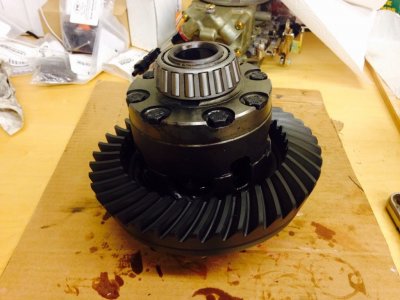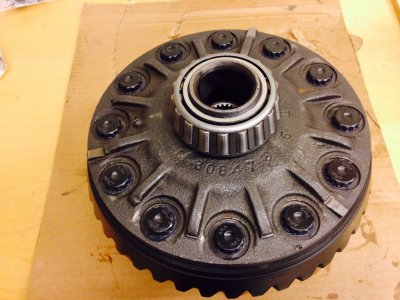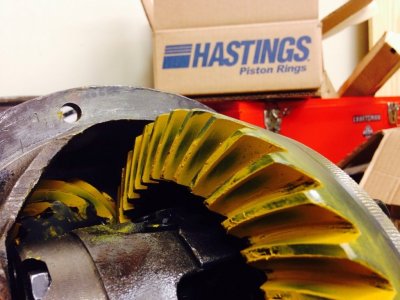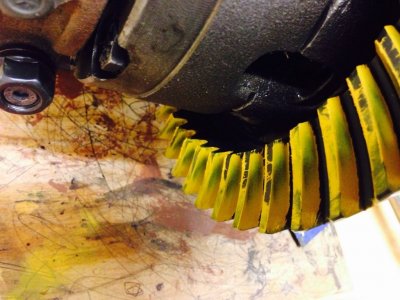The factory uses the MD method or mounting distance for setting pinion depth and to get that dimension, you measure from the rear bearing seat or face to the ring gear center line. Best way imo to figure out what the PD (pinion depth) with gears that are not marked is to measure the thickness of the gear head and subtract it from the MD figure. For example, using the Dana 60, the MD is 5.000". If the thickness of the pinion gear head is 1.875", subtract this from 5.000", then your pinion depth is 3.125". Aftermarket gears are marked + or - in inches and are set according to the 3.125 standard dimension for the Dana. The 8 3/4's MD is 4.350" for the 1.750" straight pinion (42 case) and 4.344" for the 89 case. If you get a set of gears that are not marked, you use the mounting distance method to set them up or just use the pattern method. I like using my setup tool because it's faster and easier than sticking it all together, checking the pattern and then tearing it all apart again if it's not right. Sometimes it's a PITA as it is just getting the shims on the pinion to read what it wants....
























